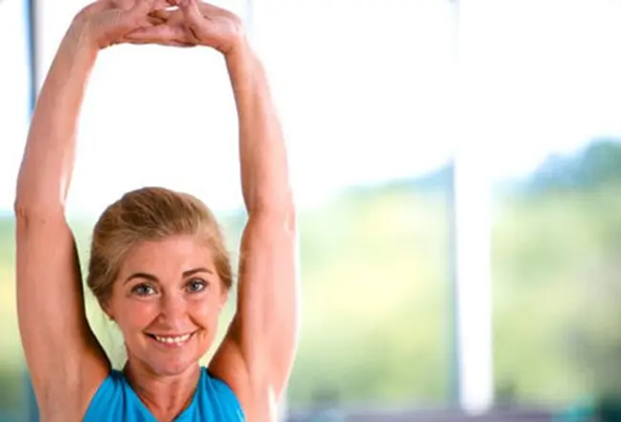What Is Rheumatoid Arthritis?
Rheumatoid arthritis is the most common form of autoimmune arthritis. It causes joints to become painful, tender, swollen, and stiff.
People with rheumatoid arthritis (RA) often have more than one joint affected by the condition. The same two joints on opposite sides of the body are frequently involved with RA. RA impacts small joints, which are found in the wrists, hands, and feet.
Although joint problems are the first things people recognize when it comes to arthritis, the disease of rheumatoid arthritis can impact other parts of the body as well. With RA, problems as follows may also occur:
References: https://www.medicinenet.com/rheumatoid_arthritis_exercises_slideshow/article.htm
- eyes become dry, painful, and red,
- the mouth becomes dry and gums are more easily irritated or infected,
- the skin can develop small lumps over bony areas known as rheumatoid nodules,
- blood vessels become inflamed, potentially causing nerve and skin damage,
- the number of red blood cells can drop, called anemia, and
- lungs can become inflamed and scarred, causing shortness of breath.
- female hormones (70 percent of RA sufferers are women),
- obesity,
- infectious agents like bacteria and viruses, and
- one’s physical and emotional response to stress and trauma.
- air pollution,
- cigarette smoke exposure,
- insecticide exposure, and
- exposure to mineral oil or silica in the workplace.
- strengthening bones and muscles,
- delaying joint replacement,
- decreasing fatigue,
- lowering blood pressure,
- improving cholesterol levels,
- reducing pain, and
- improving movement and well-being.
- Begin slowly with a few minutes in a heated pool.
- Use a kickboard when you first adjust to moving in the water.
- Gradually build to a goal of swimming 30 minutes at a time.
- stair climbing,
- walking,
- dancing, and
- low-impact cardio machines, like the elliptical trainer.
- No need for additional equipment.
- The body is activating nearly all of its available motor units.
- Increased strength.
- Improved flexibility.
- With your arms at chest level, press the palms of your hands together as hard as you can.
- Hold for five seconds and then rest for the same amount of time.
- Do five repetitions.
- Slowly build up to holding the press for 10 to 15 seconds at a time.
- If it makes your joints hurt, ask a trainer to show you another type of isometric chest exercise.
- Stand with your back against a wall and your arms at your sides.
- With your elbows straight, push your arms back toward the wall.
- Hold for five seconds and then rest.
- Repeat 10 times.
- If it hurts your joints, ask a trainer to show you another isometric shoulder exercise.
- Sit on the floor or a bed with one leg straight and the other bent.
- Tighten the thigh muscles of your straight leg as hard as you can and count to six.
- Relax, and then repeat.
- Do it with the opposite leg, gradually increasing up to five, then 10, then 15 repetitions, twice a day with each leg.
- If it hurts your joints, ask a trainer to show you another isometric thigh exercise.
- Make a fist.
- Open and extend your fingers as straight as possible.
- Repeat this exercise, gradually increasing up to 20 times, twice a day.
- To add more challenge to this stretch, squeeze a foam or sponge ball about the size of a tennis ball, then release and extend your fingers.
- Sit at a table or desk.
- With your left forearm on the table, let your left hand hang over the edge.
- Use your right hand to grab the fingers of your left hand and bend your left hand at the wrist, slowly moving it up and then down as far as possible without pain.
- Repeat with the opposite hand.
- Increase up to 20 repetitions, twice a day.
- With your arm extended parallel to the floor, position your palm face-up.
- Use your opposite hand to grab hold of the fingers, and pull the palm of the extended hand toward the floor.
- Hold for 30 seconds.
- Now, do the same exercise, except this time turn your palm face down.
- Use the opposite hand to push the top of your extended fingers and hand down toward the floor.
- Hold for 30 seconds.
- Sit or lie on your back on the floor or on a bed, feet slightly apart.
- With your legs and knees straight, turn your knees in toward each other and touch the toes of your feet together.
- Hold for five seconds.
- Turn your legs and knees out, and hold for five seconds.
- Repeat this twice a day, gradually increasing up to five, 10, and then 20 repetitions.
- Face a wall and place your palms flat on it, one foot forward, and one foot back.
- Leave your heels on the floor and lean forward.
- You’ll feel a gentle pull in the calf of your back leg and the Achilles tendon at the back of the ankle.
- Hold for 30 seconds.
- Do three repetitions.
- Then reverse the position of your legs and repeat.
- Greater strength
- Improved flexibility
- Improved balance
- Coordination
- Less stress and anxiety
- Better concentration and memory
- Better posture
- Greater strength
- Better endurance
- Improved walking
- jogging,
- running,
- tennis on hard pavement,
- lifting heavy weights,
- basketball, and
- indoor volleyball.
- Pace yourself
- Don’t overdo it
- If it causes pain, stop immediately
References: https://www.medicinenet.com/rheumatoid_arthritis_exercises_slideshow/article.htm

